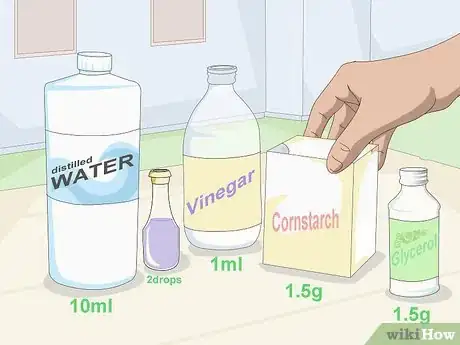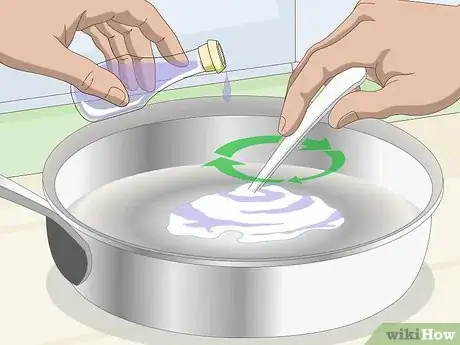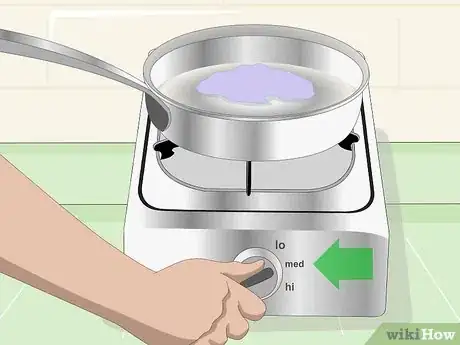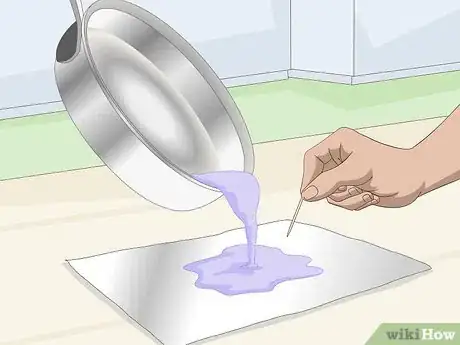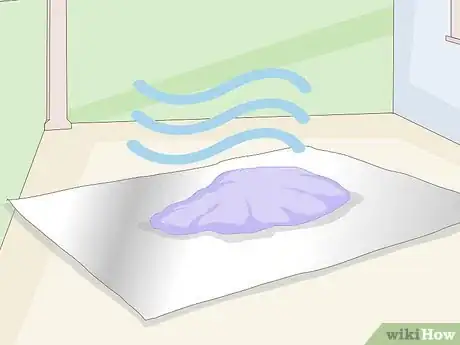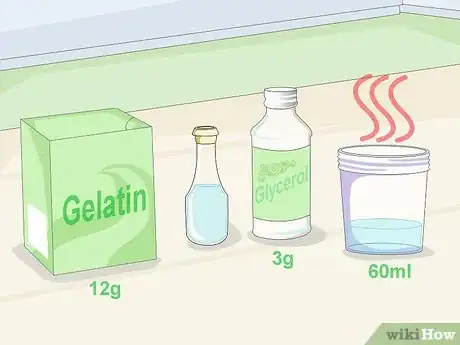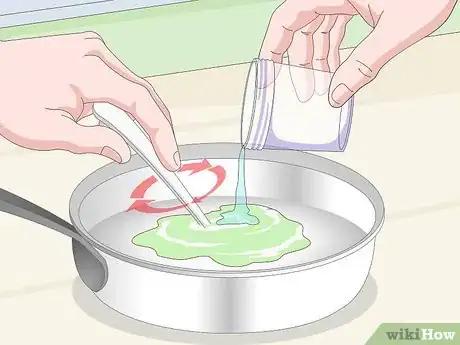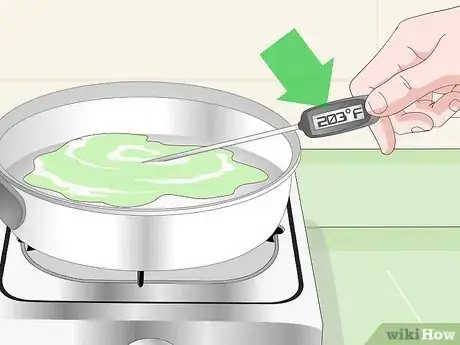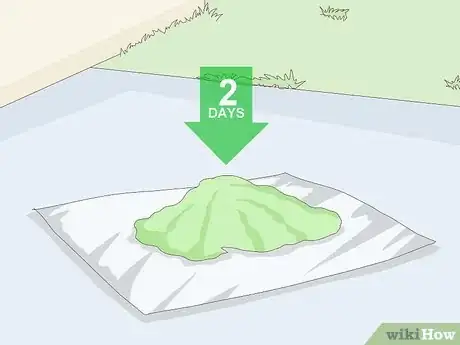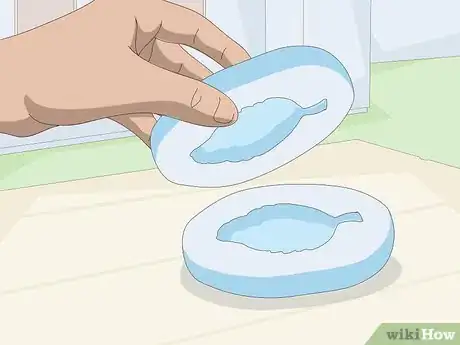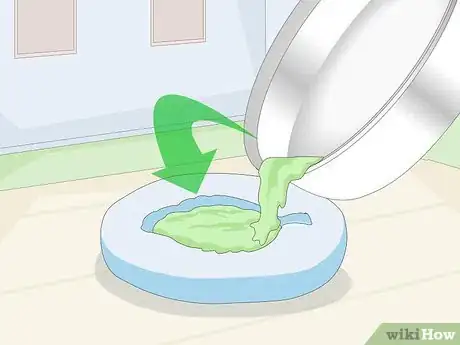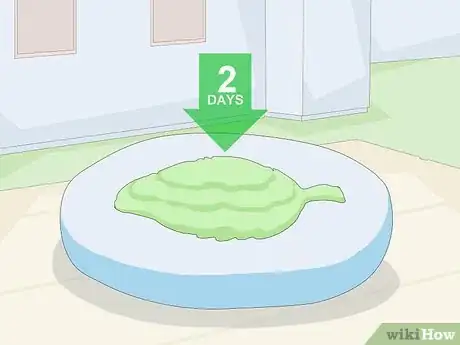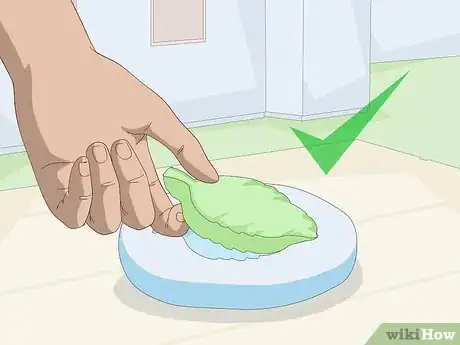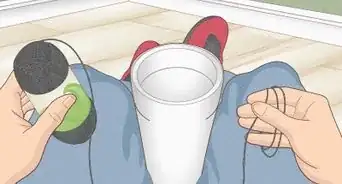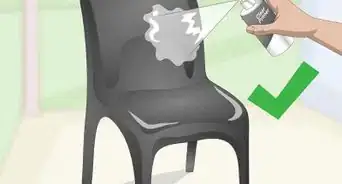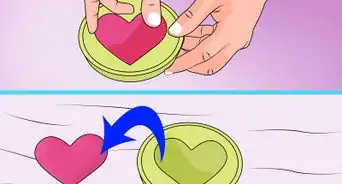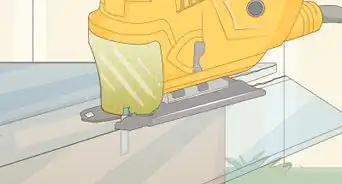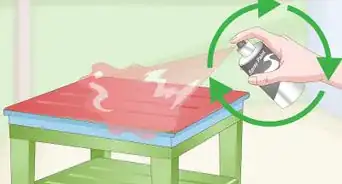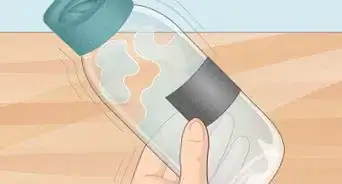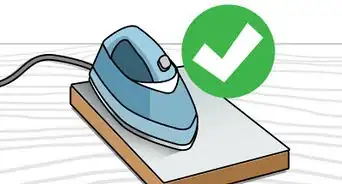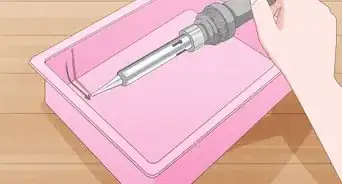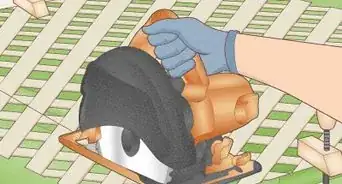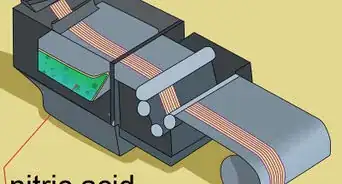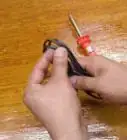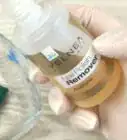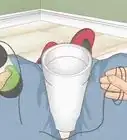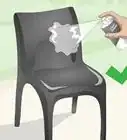This article was co-authored by wikiHow Staff. Our trained team of editors and researchers validate articles for accuracy and comprehensiveness. wikiHow's Content Management Team carefully monitors the work from our editorial staff to ensure that each article is backed by trusted research and meets our high quality standards.
wikiHow marks an article as reader-approved once it receives enough positive feedback. This article received 19 testimonials and 88% of readers who voted found it helpful, earning it our reader-approved status.
This article has been viewed 431,438 times.
Learn more...
A bioplastic is a type of plastic that can be made from plant starches or gelatins/agars. They are better for the environment because they are not derived from petroleum. They can also be easily made at home with a few simple ingredients and a stove!
Steps
Using Cornstarch and Vinegar
-
1Gather the necessary materials. To make this type of bioplastic, you will need cornstarch, distilled water, glycerol, white vinegar, a stove, a saucepan, a silicone spatula, and food coloring (if desired). These items should be readily available at the grocery store or online. Glycerol is also called glycerine, so try searching for that if you’re having trouble finding glycerol. The following amounts of each ingredient are needed to make the bioplastic:
- 10ml distilled water
- 0.5-1.5g glycerol
- 1.5g cornstarch
- 1ml of white vinegar
- 1-2 drops food coloring
- Adult supervision is recommended.
-
2Combine all of the ingredients and stir together. Add all of the ingredients to the saucepan and stir to combine with the spatula. Stir until you get rid of most of the lumps in the mixture. At this stage, the mixture will be a milky white color and quite watery.
- If you add the wrong amounts of ingredients, just dispose of the mixture and start again.
Advertisement -
3Heat on medium-low. Place the saucepan on the stove and set the heat to medium-low. Stir continuously as the mixture heats. Bring it to a gentle boil. As the mixture heats, it will become more translucent and begin to thicken.
- Remove the mixture from the heat when it becomes clear and thick.
- Total heating time will be around 10-15 minutes.
- Lumps may begin to form if the mixture gets overheated.
- Add one-two drops of food coloring at this stage, if you would like to color the plastic.
-
4Pour the mixture onto foil or parchment paper. Spread the heated mixture onto a piece of foil or parchment paper to let it cool. If you would like to mold the plastic into a shape, it must be done while it is still warm. See the last method for details on molding the plastic.
- Remove any bubbles that you see by poking them with a toothpick.
-
5Allow the plastic to dry for at least two days. It will take time for the plastic to dry and harden. As it cools, it will begin to dry out. Depending on the thickness of the plastic, it can take longer for it to dry. If you make one small thick piece it will take longer to dry than a thinner larger piece.
- Leave the plastic in a cool, dry place for this process.
- Check the plastic after two days to see if it has fully hardened.
Using Gelatin or Agar
-
1Gather the necessary materials. To make this type of bioplastic, you will need gelatin or agar powder, glycerol, hot water, a saucepan, a stove, a spatula, and a candy thermometer. These ingredients should be readily available at your local grocery store. Remember, glycerol is also known as glycerine, so look for that if you can’t find glycerol. You will need the following amounts of each ingredient:
- 3g (½ tsp) glycerol
- 12g (4 tsp) gelatin or agar
- 60ml (¼ cup) hot water
- Food coloring (optional)
- Agar is a substance derived from algae that can be used in place of gelatin to make the bioplastic vegan friendly
-
2Stir together all of the ingredients. Combine all of the ingredients in the saucepan and stir until there are no clumps left. You may need to use a whisk to disperse all of the clumps. Place the saucepan on the stove and start heating the mixture on medium-high heat.
- If you want to color your plastic, you can add a few drops of food coloring at this step.
-
3Heat the mixture to 95°C (203°F) or until it begins to froth. Put the candy thermometer into the mixture and monitor the temperature until it reaches approximately 95°C (203°F) or begins to froth. If the mixture begins to froth before it reaches temperature, that is okay. Remove it from the heat when it either reaches temperature or starts frothing.
- Continue to stir the mixture while it is heating up.
-
4Pour the plastic onto a smooth surface covered with foil or parchment paper. After you remove the pan from the heat source, you will need to remove any excessive froth. Spoon it out before pouring the plastic out of the pan. Stir everything to remove all clumps from the plastic.
- If you just want to make plastic for fun, pour the mixture out onto a smooth surface. Make sure the surface is covered with foil or parchment paper so the plastic can be removed easily.
- If you want to mold the plastic into a specific shape, you will need to do it during this step. Refer to the last method on molding for more details and help.
-
5Leave the plastic to harden for at least two days. The amount of time it will take the plastic to harden is dependent upon how thick the piece is. Generally, it will take at least two days for it to fully dry out and harden. You can make this process go a little faster by using a blow dryer on the plastic. It’s easiest to leave the plastic undisturbed for a few days so it can dry on its own.
- Once the plastic hardens, it can no longer be molded or shaped. If you want to shape it, you must do it while it is still warm and moldable.
Molding the Bioplastic
-
1Make a mold for the plastic. A mold is the negative of a shape that you would like to make. You can make a cast of an object you would like to reproduce by sculpting two pieces of clay around the object. When the clay dries, remove the two pieces. If you fill each half with the liquid plastic and then put the halves together, you can make a copy of that object. You can also use a cookie cutter to cut shapes out of the plastic while it is still warm.
- An alternative to making your own mold, is to purchase a mold at a craft or hobby shop.
-
2Pour the hot plastic into the mold. Once you have a mold, you can use it to make more objects. While the plastic is still hot, pour it into the mold. Make sure that the plastic gets into the entire mold and try pop bubbles by lightly tapping the mold on the counter.
- To make the object easier to remove when it dries, coat the mold with a non-stick spray before pouring the plastic in.
-
3Let the plastic dry for at least two days. The plastic will take a few days to dry and fully harden. The amount of time it takes to dry is dependent upon the thickness of the object. If the object is very thick, it can take longer than two days to fully harden.
- After two days, check the plastic. If it still appears to be wet, let it sit for another day and check it again. Continue to do this until the plastic is fully dry.
-
4Remove your plastic from the mold. After waiting a few days, the plastic will be fully hardened and dry. At this point, you can remove the plastic from the mold. You have now made your own plastic version of whatever object you chose to mold.
- You can reuse this mold to make as many plastic versions of the object as you like.
Community Q&A
-
QuestionHow do I make it stronger?
 Community AnswerThe more glycerin you use, the more the plastic will be rubbery. So if you put less, the plastic will be harder but more brittle.
Community AnswerThe more glycerin you use, the more the plastic will be rubbery. So if you put less, the plastic will be harder but more brittle. -
QuestionWhat role do glycerin and vinegar play in the manufacture of bio-plastics?
 Community AnswerGlycerin is used as a plasticizer that links polymer chains together and allows them to slide past each other. Vinegar helps the corn starch to fully dissolve in the mixture because starch dissolves better in the presence of electrically charged ions. If you do not have vinegar handy, ordinary table salt can also be used to help the corn starch to dissolve because it can provide free ions.
Community AnswerGlycerin is used as a plasticizer that links polymer chains together and allows them to slide past each other. Vinegar helps the corn starch to fully dissolve in the mixture because starch dissolves better in the presence of electrically charged ions. If you do not have vinegar handy, ordinary table salt can also be used to help the corn starch to dissolve because it can provide free ions. -
QuestionWhat can I use a substitute for a vinegar?
 Community AnswerOrdinary table salt can be used as substitute for the vinegar.
Community AnswerOrdinary table salt can be used as substitute for the vinegar.
Things You'll Need
Using Cornstarch and Vinegar
- 10 milliliters (mL) distilled water
- 0.5 -1.5 grams (g) glycerol
- 1.5 g cornstarch
- 1 mL of white vinegar
- 1-2 drops food coloring
- Non-stick spatula
- Non-stick saucepan
- Foil or parchment paper
Using Gelatin or Agar
- 3 grams (½ tsp) glycerol
- 12 g (4 tsp) gelatin
- 60 mL (¼ cup) hot water
- Food coloring (optional)
- Non-stick spatula
- Non-stick saucepan
- Foil or parchment paper
- Candy thermometer
About This Article
The easiest way to make bioplastic is to combine 10mL of distilled water, 1 mL of white vinegar, 1.5 grams of cornstarch, and 0.5 grams of glycerol in a pot and stir. Boil the mixture until it becomes clear and thick, then pour it onto parchment paper in the shape you want. Let the mixture cool for 2 days or until fully hardened, then use! For help making bioplastic if you don’t have cornstarch, keep reading!
